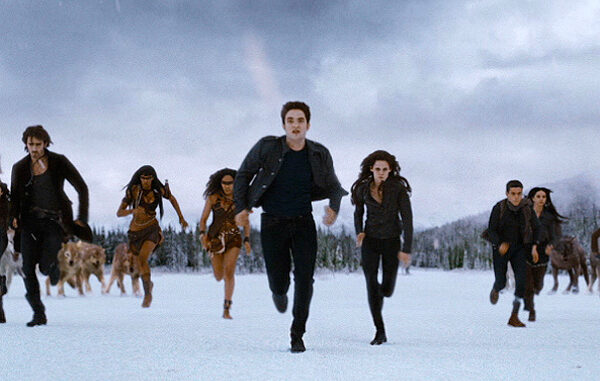
The digital world, with its insatiable appetite for content, often functions as a vast, collective memory palace. Within its infinite scroll, fleeting moments can trigger profound waves of nostalgia, resurfacing cultural touchstones that once defined a generation. So it was when a seemingly simple TikTok video featuring Taylor Lautner and his wife, Tay Dome (now also Taylor Lautner), recreating an iconic Twilight scene, unexpectedly ignited the digital sphere, becoming an illustrative case study in the power of shared memory, celebrity evolution, and the unique alchemy of social media.
At its heart, the video was a knowing wink to a bygone era. For those who came of age in the late 2000s and early 2010s, Twilight wasn't just a book series or a film franchise; it was a cultural phenomenon. It was the fervent passion of Team Edward vs. Team Jacob, the breathless anticipation of midnight premieres, and the visceral emotional landscape of teenage angst and supernatural romance. Taylor Lautner, as the earnest, loyal, and often shirtless werewolf Jacob Black, was etched into the collective consciousness of millions. The particular moment they chose to reenact—a dramatic, rain-soaked confrontation where Jacob declares his unwavering devotion to Bella—was not just any scene; it was a distillation of the series' intense emotional core, a moment of raw, adolescent heartbreak and devotion.
But the virality isn't just about the past; it's also about the present. The charming ingenuity of the video lies in the contrast: the raw, feral energy of a shirtless teen werewolf replaced by a composed, happily married adult, playfully guided by his wife. Tay Dome's playful complicity and genuine affection for her husband's past persona are palpable. It’s not just Taylor Lautner embracing his former role; it’s them embracing it together. This dynamic shifts the narrative from a simple celebrity throwback to a tender, self-aware act of shared humor and secure love. It tells us, implicitly, that Lautner is not burdened by his past fame but rather comfortable enough to lean into it, especially with a partner who clearly delights in it alongside him.
TikTok, as the chosen platform, played a crucial role in amplifying this moment. Its algorithm, a digital whisper network, is perfectly designed for the rapid dissemination of short, relatable, and emotionally resonant content. The video's brevity, its casual authenticity, and its direct appeal to a core demographic that grew up with Twilight made it instantly shareable. It wasn't a highly produced studio piece; it felt spontaneous, almost like a friend sharing a funny home video. This perceived authenticity is TikTok's superpower, bridging the gap between celebrity and audience, transforming a distant star into a relatable figure. Fans weren't just watching a performance; they were feeling a shared moment, a collective laugh, a comforting wave of nostalgia washing over their feeds.
Beyond the individual narratives, the video serves as a compelling illustrative essay on our relationship with celebrity and the passage of time. It’s a meta-commentary on growing up in the public eye, on the evolution of identity, and on the enduring power of pop culture to shape personal and collective memory. The Jacob Black of Twilight was a symbol of unrequited love and fierce loyalty, a character whose emotional turmoil felt deeply personal to a generation of viewers. To see the actor who embodied that character now, secure and happy, playfully revisiting that intensity, is a comforting full circle. It’s a testament to the enduring power of fandom, reminding us that the stories that shaped us in our youth continue to resonate, even as we (and the actors who brought them to life) mature and evolve.
In essence, the Taylor Lautner TikTok moment wasn't just a funny video; it was a digital reunion, a knowing wink across the years, and a gentle reminder that some stories, and the people who tell them, never truly fade. It illustrated the beautiful interplay between past and present, the comforting embrace of nostalgia, and the unique way social media can bring seemingly disparate elements of our cultural tapestry together, if only for a few, viral, and wonderfully illustrative seconds.
